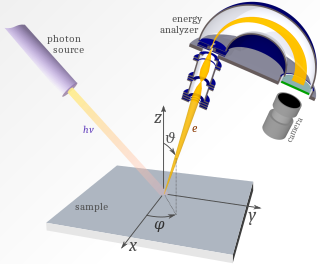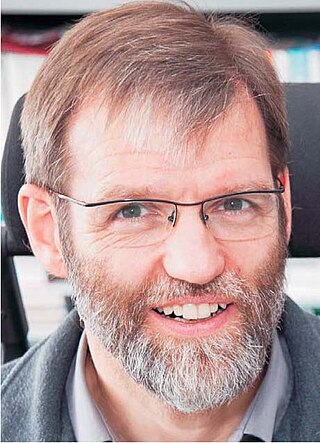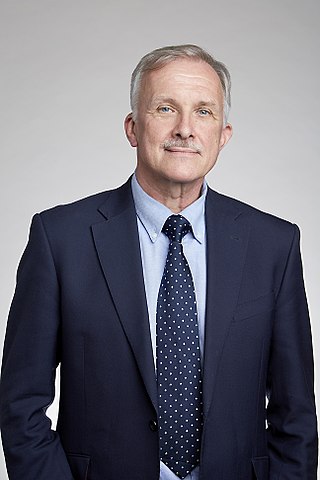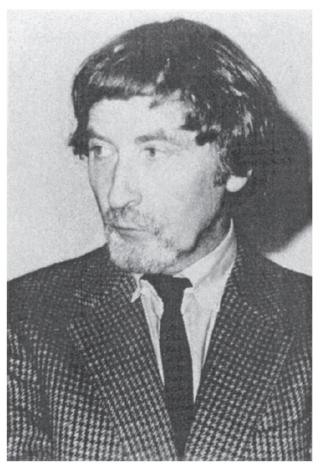
Photoluminescence is light emission from any form of matter after the absorption of photons. It is one of many forms of luminescence and is initiated by photoexcitation, hence the prefix photo-. Following excitation, various relaxation processes typically occur in which other photons are re-radiated. Time periods between absorption and emission may vary: ranging from short femtosecond-regime for emission involving free-carrier plasma in inorganic semiconductors up to milliseconds for phosphoresence processes in molecular systems; and under special circumstances delay of emission may even span to minutes or hours.
In physics and physical chemistry, time-resolved spectroscopy is the study of dynamic processes in materials or chemical compounds by means of spectroscopic techniques. Most often, processes are studied after the illumination of a material occurs, but in principle, the technique can be applied to any process that leads to a change in properties of a material. With the help of pulsed lasers, it is possible to study processes that occur on time scales as short as 10−16 seconds. All time-resolved spectra are suitable to be analyzed using the two-dimensional correlation method for a correlation map between the peaks.

Photoemission spectroscopy (PES), also known as photoelectron spectroscopy, refers to energy measurement of electrons emitted from solids, gases or liquids by the photoelectric effect, in order to determine the binding energies of electrons in the substance. The term refers to various techniques, depending on whether the ionization energy is provided by X-ray, XUV or UV photons. Regardless of the incident photon beam, however, all photoelectron spectroscopy revolves around the general theme of surface analysis by measuring the ejected electrons.
Photoemission electron microscopy is a type of electron microscopy that utilizes local variations in electron emission to generate image contrast. The excitation is usually produced by ultraviolet light, synchrotron radiation or X-ray sources. PEEM measures the coefficient indirectly by collecting the emitted secondary electrons generated in the electron cascade that follows the creation of the primary core hole in the absorption process. PEEM is a surface sensitive technique because the emitted electrons originate from a shallow layer. In physics, this technique is referred to as PEEM, which goes together naturally with low-energy electron diffraction (LEED), and low-energy electron microscopy (LEEM). In biology, it is called photoelectron microscopy (PEM), which fits with photoelectron spectroscopy (PES), transmission electron microscopy (TEM), and scanning electron microscopy (SEM).
Burkard Hillebrands is a German physicist and professor of physics. He is the leader of the magnetism research group in the Department of Physics at the Technische Universität Kaiserslautern.

The State Research Center for Optics and Material Sciences (OPTIMAS) connects two areas of research for which the University of Kaiserslautern has a national and international reputation, founded upon relevant contributions to the development of laser physics, photonics and plasmonics. Researchers in Kaiserslautern have also been prominent in the development of magnetic, electronic and molecular materials, as well as thin films, nanostructures and ultracold quantum gases. In order to continue building on this research foundation, OPTIMAS has been established at TU Kaiserslautern within the framework of the research initiative of the state of Rhineland-Palatinate.
Ultrafast electron diffraction (UED), also known as femtosecond electron diffraction (FED), is a pump-probe experimental method based on the combination of optical pump-probe spectroscopy and electron diffraction. UED provides information on the dynamical changes of the structure of materials. It is very similar to time resolved crystallography, but instead of using X-rays as the probe, it uses electrons. In the UED technique, a femtosecond (fs) laser optical pulse excites (pumps) a sample into an excited, usually non-equilibrium, state. The pump pulse may induce chemical, electronic or structural transitions. After a finite time interval, a fs electron pulse is incident upon the sample. The electron pulse undergoes diffraction as a result of interacting with the sample. The diffraction signal is, subsequently, detected by an electron counting instrument such as a CCD camera. Specifically, after the electron pulse diffracts from the sample, the scattered electrons will form a diffraction pattern (image) on a CCD camera. This pattern contains structural information about the sample. By adjusting the time difference between the arrival of the pump and probe beams, one can obtain a series of diffraction patterns as a function of the various time differences. The diffraction data series can be concatenated in order to produce a motion picture of the changes that occurred in the data. UED can provide a wealth of dynamics on charge carriers, atoms, and molecules.
The Hamburg Centre for Ultrafast Imaging (CUI) is a research facility established in the context of the Universities Excellence Initiative by the German Federal and State Governments. The multidisciplinary and interinstitutional cluster is located at Universität Hamburg, Hamburg, Germany, and has been initiated on 1 November 2012. The funding with more than €25 million by the German Research Foundation will run until 31. December 2018. Scientific teams cooperating in the cluster come from the Universität Hamburg, the Deutsches Elektronen-Synchrotron (DESY), the European XFEL GmbH (XFEL), the European Molecular Biology Laboratory (EMBL), and the newly founded Max-Planck-Institute for the Structure and Dynamics of Matter (MPSD). A full application for a second research period of seven years was handed in at the end of 2017 to the German Research Foundation (DFG) for discussion. After the successful application in 2018, the new cluster “CUI: Advanced Imaging of Matter” started in 2019.

Time-resolved two-photon photoelectron (2PPE) spectroscopy is a time-resolved spectroscopy technique which is used to study electronic structure and electronic excitations at surfaces. The technique utilizes femtosecond to picosecond laser pulses in order to first photoexcite an electron. After a time delay, the excited electron is photoemitted into a free electron state by a second pulse. The kinetic energy and the emission angle of the photoelectron are measured in an electron energy analyzer. To facilitate investigations on the population and relaxation pathways of the excitation, this measurement is performed at different time delays.

Gereon Niedner-Schatteburg is a German Physicist and Chemist. He is Professor of Physical Chemistry at the Department of Chemistry of the University of Kaiserslautern. Since 2011 he acts as director of the DFG funded transregional collaborative research center SFB/TRR 88 3MET.de.

Ursula Keller is a Swiss physicist. She has been a physics professor at the ETH Zurich, Switzerland since 2003 with a speciality in ultra-fast laser technology, an inventor and the winner of the 2018 European Inventor Award by the European Patent Office.

(James) Roy Taylor is Professor of Ultrafast Physics and Technology at Imperial College London.
Uwe Paul Erich Thumm is a German-American physicist with research interests in atomic, molecular, and optical physics and nanoscience. A distinguished physics professor at Kansas State University and the J. R. Macdonald Laboratory in Manhattan, Kansas his research team investigates the ultrafast dynamics of electrons and molecular fragments in laser-matter and particle-matter interactions, highly-charged-ion physics, electron–atom collisions, and plasmonic nanostructures. He is a Fellow of the American Physical Society and recipient of several awards, including the Senior Research Award of the Alexander von Humboldt Foundation.
Helen H. Fielding is a Professor of physical chemistry at University College London (UCL). She focuses on ultrafast transient spectroscopy of protein chromophores and molecules. She was the first woman to win the Royal Society of Chemistry (RSC) Harrison-Meldola Memorial Prize (1996) and Marlow Award (2001).
Hrvoje Petek is a Croatian-born American physicist and the Richard King Mellon Professor of Physics and Astronomy, at the University of Pittsburgh, where he is also a professor of chemistry.
Ultrafast scanning electron microscopy (UFSEM) is an innovative consolidated facility that combines two microscopic modalities, Pump-probe microscopy and Scanning electron microscope, to gather temporal and spatial resolution phenomena. In fact, this technique is very wonderful at which ultrashort laser will be used for pump excitation of the material and the sample response will be detected by an Everhart-Thornley detector. Acquiring data depends mainly on formation of images by raster scan mode after pumping with short laser pulse at different delay times. The characterization of the output image will be done through the temporal resolution aspect. Thus, the idea is to exploit the shorter DeBroglie wavelength in respect to the photons which has great impact to increase the resolution about 1 nm. That technique is an up-to-date approach to study the dynamic of charge on material surfaces.

Majed Chergui is a Swiss and French physicist specialized in ultrafast dynamics of light-induced processes. He is a professor at EPFL, head of the Laboratory of Ultrafast Spectroscopy at EPFL's School of Basic Sciences, and founding director of the Lausanne Centre for Ultrafast Science (LACUS).
Olga Smirnova is a Russian physicist who is Head of the Strong Field Theory Group at the Max Born Institute for Nonlinear Optics and Short Pulse Spectroscopy and Professor at the Technical University of Berlin. Her research considers the interaction of strong fields with atoms and molecules.
Georg von Freymann is a German experimental physicist and professor of physics at the Technical University of Kaiserslautern and head of the "Optical Technologies and Photonics" research group there.

Karl Heinz Bennemann is a German condensed matter physicist. He has contributed to the advance on the understanding of traditional BCS and high Tc superconductors, the magnetic properties of alloys, the magnetic properties of low dimensional systems, the physicochemical properties of surfaces, the physicochemical properties of nanostructured materials, ultrafast phenomena, and non-linear optics, among others. His work was recognized through an Alfred P. Sloan fellowship in 1969.









